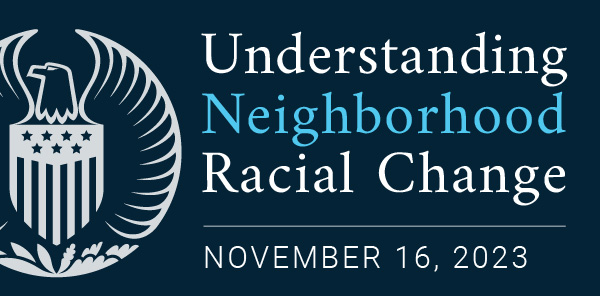Understanding Neighborhood Racial Change
Understanding Neighborhood Racial Change
The United States is segregated, and racial stratification is a defining feature of American cities. Various types of demographic sorting have created and reinforced patterns of racial segregation. The Economic Mobility Project’s virtual event, Understanding Neighborhood Racial Change, took place on November 16, 2023, from 11:00 am to 12:15 pm CT (12:00 pm to 1:15 pm ET) and highlighted research showing that households choose neighborhoods based on selected criteria, such as race makeup. Daniel Hartley, senior economist at the Chicago Fed, and his co-authors presented a forward-looking model of neighborhood choice in which households hold preferences for neighborhood features, including racial composition, and they found that many households strongly prefer to live in same-race neighborhoods.
To provide a more granular analysis of racial residential sorting, Marcus Casey, director of undergraduate studies and associate professor of economics at the University of Illinois Chicago, and his co-authors addressed the following question: To what extent are households responding to the identities of their new neighbors versus the internal changes in the neighborhood that accompany them? They presented a new research design that seeks to separately identify a component of neighborhood racial change that is directly related to neighbors’ identities rather than associated neighborhood amenity changes.
The research presentations were followed by a panel discussion with Andre Perry, senior fellow at Brookings Metro; Rachael Woldoff, professor of sociology at West Virginia University; Valerie Wilson, director of the Economic Policy Institute’s Program on Race, Ethnicity, and the Economy; and Ashley Bell, CEO of Ready Life. Stacey Vanek Smith, NPR journalist and former host of The Indicator from Planet Money, moderated the panel. They addressed questions including the following:
- What can be done to create stable, mixed-income, racially diverse neighborhoods?
- Who can afford to move in response to a different-race neighbor, and what is the financial impact of segregation and gentrification?
- What are some achievable public policy solutions to promote integrated neighborhoods?











